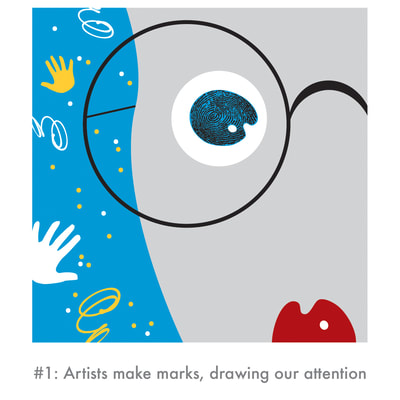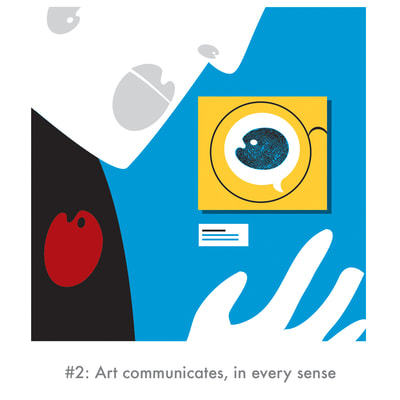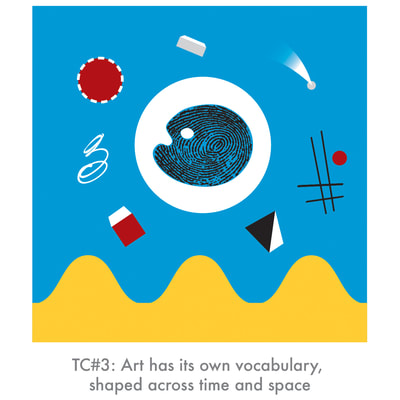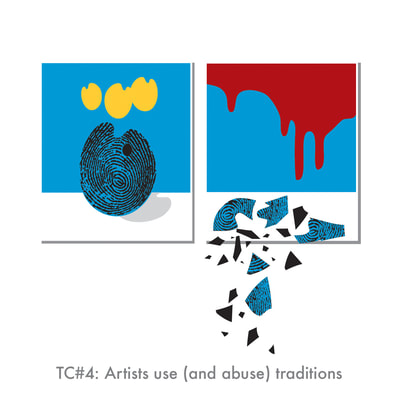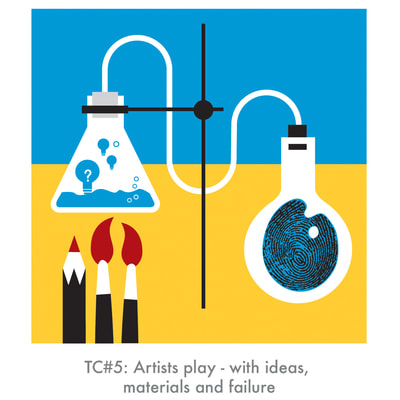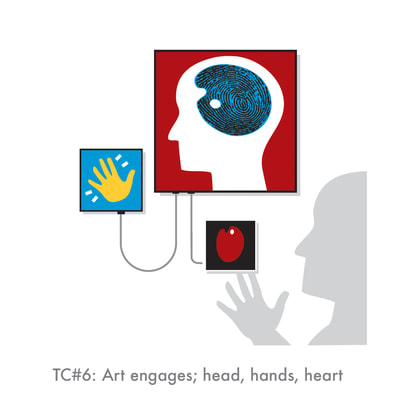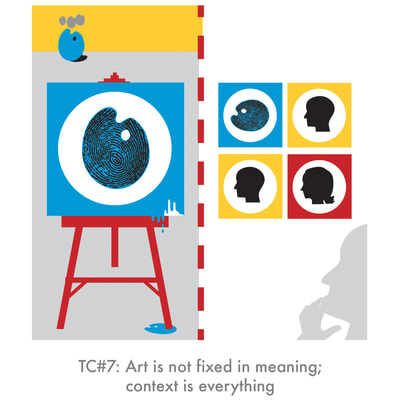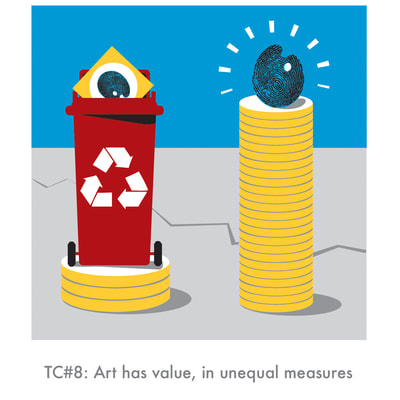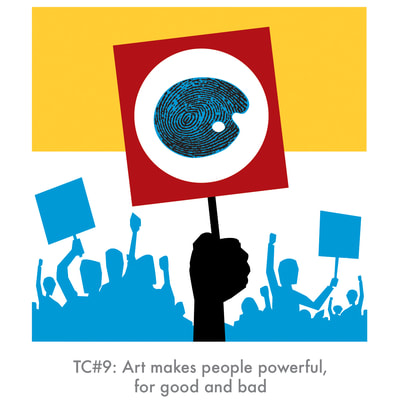ABOUT THE THRESHOLD CONCEPTS
These Threshold Concepts are, we believe, (some of) the BIG IDEAS that can help students develop a deeper understanding of art. They are not meant to be instantly understood. Once opened, they introduce students to troublesome knowledge and new ways of considering our subject. In the classroom we hope they will promote discussion, experimentation and lift the lid on some of the unnecessary pressures that students (and teachers) can unwittingly inflict upon themselves. To be clear, there'll be little mention of grades, levels, assessment objectives, final pieces or overly-precious sketchbooks here.
Each concept has its own illustration, often with a nod to the work of other artists. The hope is that, alongside their accompanying statements, these will support discussion and debate. Click on each graphic below (or using the home page or drop-down menu) to access further resources for each idea. These resources adopt the same format - an introduction to the graphic; a summary of what students need to know; a range of practical activities and resources. Each page then concludes with some suggestions for wider reading, mainly with A level students in mind to support contextual studies.
Feel free to make use of all of these resources with students as you wish. Please do let us know if you find them useful via email, or by donating here. All funds raised go towards supporting our work with teachers and young people.
Each concept has its own illustration, often with a nod to the work of other artists. The hope is that, alongside their accompanying statements, these will support discussion and debate. Click on each graphic below (or using the home page or drop-down menu) to access further resources for each idea. These resources adopt the same format - an introduction to the graphic; a summary of what students need to know; a range of practical activities and resources. Each page then concludes with some suggestions for wider reading, mainly with A level students in mind to support contextual studies.
Feel free to make use of all of these resources with students as you wish. Please do let us know if you find them useful via email, or by donating here. All funds raised go towards supporting our work with teachers and young people.

